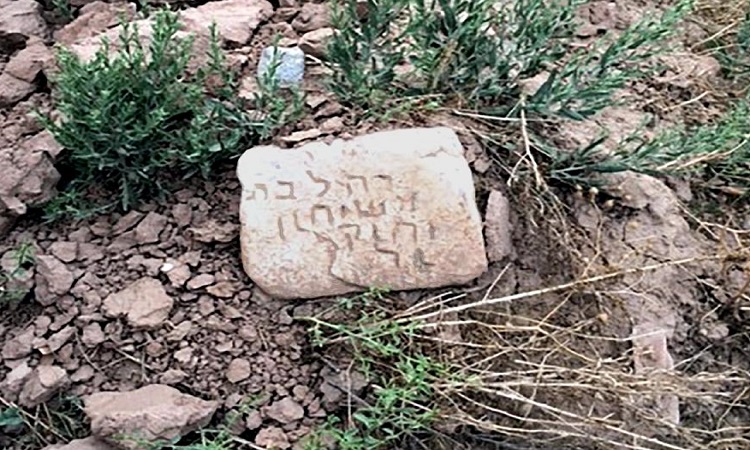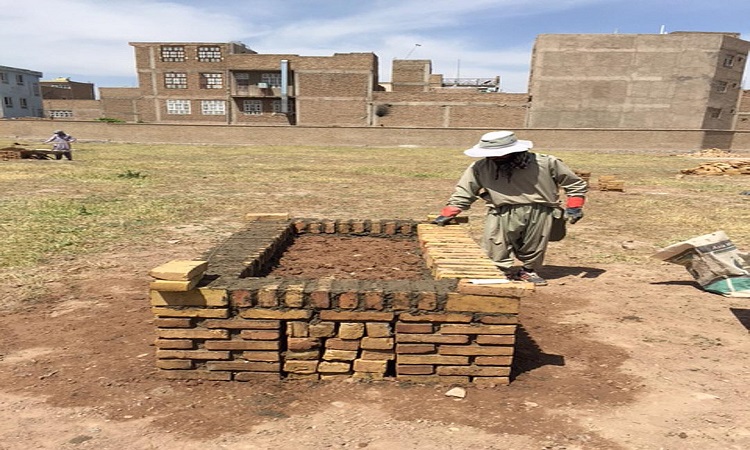REMEMBER THE DAYS OF OLD, CONSIDER THE YEARS OF MANY GENERATIONS – FROM THE SONG OF MOSES, THE BOOK OF DEUTERONOMY
Her name is Osnat Gad, a talented and successful Jewelry designer and poster child for the American Dream. Osnat, along with her mother, five sisters and one brother immigrated to the United States in 1961 to join her father who had previously arrived from Afghanistan in 1959. While the Gad family are members of a rare minority of Afghani Jews, contrary to what you might expect, Osnat and her family were not political refugees and they were not fleeing religious persecution. They left their ancestral home in Herat, Afghanistan seeking a better life, responding to the promise that America offers.
The Jewish presence in the country known today as Afghanistan dates back 2,700 years ago when the Assyrian assault of Jerusalem in 721 BCE resulted in the forced relocation of the ten Jewish tribes now referred to as the lost tribes of Judah. Jews fleeing Assyrian captivity made their way along the Silk Road through Persia (Iraq) to settle in Afghanistan. There they established flourishing communities in cities like Kabul and Herat. For centuries Jews were welcomed in the region because of their respected business acumen and their wide-reaching connections in the Silk Road trade routes.
A strange ethos developed in the 16th century when it was theorized that the Pashtun tribe of Afghan Muslims descended from Hebrews. It came from an idea that the name “Afghan” relates to Afghana, a grandson of King Saul. The theory has been discounted but perhaps this belief in shared history accounts for the acceptance of Jews in the area. Regardless, by 1836, it is believed that the Jewish population in western Afghanistan was between 40,000 and 80,000, with Herat at the heart of the community. (Editor’s Note: This figure has been contested by some scholars as being highly exaggerated)
Sadly by the late 19th century all that changed and Jews became targets of discrimination and were forced to endure severe restrictions in housing, dress, occupation, and lifestyle. Historical records indicate that by 1936 a mere 3,300 Jews were living in Afghanistan under deplorable conditions and by the time of the Taliban offensive, only two Jews still resided in the country. The last Afghani Jew, ZabalonSimitov, finally departed for Israel in 2021, after abandoning the synagogue he had stanchly maintained for decades.

Of the four original synagogues in Herat, two were converted to mosques, one turned into a school, and the last one, the Yu Aw shul, has become an Islamic cultural center. The former Yu Aw shul still has Hebrew inscriptions on its walls and the remnants of a Mikvah are present. It has recently been reported that the Aliph Foundation – a Swiss group aimed at protecting cultural heritage sites in conflict areas – has received authorization to restore the building and the Mikvah under the protection of the Taliban government. Only time will tell if that project is realized.
With the departure of Jewish populations from Herat, there was no one left to look after the synagogues and mikvahs, let alone the cemeteries which had suffered serious disrepair in both Kabul and Herat.
For some years, a dear friend Shlomo Yakuti, a Canadian Jew originally from Herat, had been encouraging Osnat to preserve her Father’s ancestral heritage. Serendipitously, in 2013 Osnat received this startling message through her website: “I am from Afghanistan Herat. I want to have contact with Jewish from Afghanistan or Herat city and have a lot of information about Herat Jewish and the synagogue in the old city of Heart.”
Osnat was hugely suspicious of this cryptic message from an Afghanistan gentleman – let’s refer to him as SJ for security reasons – and his motives for reaching out to her. Over the following two years, SJ and Osnat developed a relationship until he finally convinced her that his intentions were honorable. He was able to provide official documentation that he was an engineer from Herat that had been employed by the Agha Khan Foundation to supervise the restoration of Jewish monuments but he needed direction and funding help. After due consideration as to the enormous sacrifice taking on this project would require, she agreed to step up to the challenge of restoring the Herat cemetery… the very same cemetery where many of her ancestors were interred.
Osnat began a campaign to fund the restoration by reaching out to family, friends, descendants of Afghan Jews, Afghan Jewish businessmen she knew from her jewelry business, along with the Afghan Jewish Foundation (established in 1972 in New York) and the Afghan Jewish community in Israel and London. Miraculously they all contributed to the project. But raising the money, while a major part of the challenge, was just one step in actually accomplishing the job. First, she had to get authorization from the U.S. State Department to work in a foreign country. She also needed to find the proper authorities in Kabul to sign off on the project. Amazingly, with tenacity and determination, she worked with government officials in both countries and was granted the necessary papers and approvals to proceed with the restoration.

Politically unable to be on the ground in Afghanistan, Osnat had to trust SJ to handle the restoration according to her design while during the same time, she worked on the restoration of her home in New York which had been destroyed by Hurricane Sandy. In her mind, the two multi-year projects became inseparable. While trying to obtain permits to rebuild her home, she was also trying to get permission from the U.S. State Department, the Afghan Consulate in New York, and the Ministry of Hajj and Awqaf, in Kabul and Herat, to work on restoring the cemetery. Furthermore, the reconstruction had to follow the proper Jewish Halacha – Jewish religious laws that Osnat was unfamiliar with but which SJ, a Muslim, would be expected to honor.
Finally, after five long years, the project was completed and included the building of an entry gate and four walls that encircle the cemetery. Once the walls were built, her friend Shlomo personally undertook to restore 40 tombs that had been completely shattered. Additionally, the Abdelaziz Muslim family that has maintained custodial care of the cemetery for the past 150 years has now been officially engaged to live on the premises and protect it. The current custodian is Jalilahmed Abdelaziz and he recalls family members trying to protect the cemetery even when it had been abandoned by Jews.
Over the years SJ and Osnat have learned to love and trust each other and call each other sister and brother. How rare, these days to have a loving friendship between a Muslim Afghani man who speaks almost no English and a Jewish American woman that communicates in Dari, a dialect of the Persian language spoken only by Afghani Jews!
As soon as funds become available this extraordinary story of faith and ancestral respect will be retold in a museum exhibition to be held at The American Sephardi Federation, Partner of the Center for Jewish History, located in New York City. The exhibit entitled “The Hidden World of Afghan Jews” will feature many authentic artifacts and photographs describing the peaceful, prosperous, and elegant world that for a period of time was the life enjoyed by Afghani Jews.
For information and to contribute to this project visit: Ogad@icloud.com
Story by: Barbara Angelakis
Pictures provided by: Osnat Gad



You must be logged in to post a comment Login